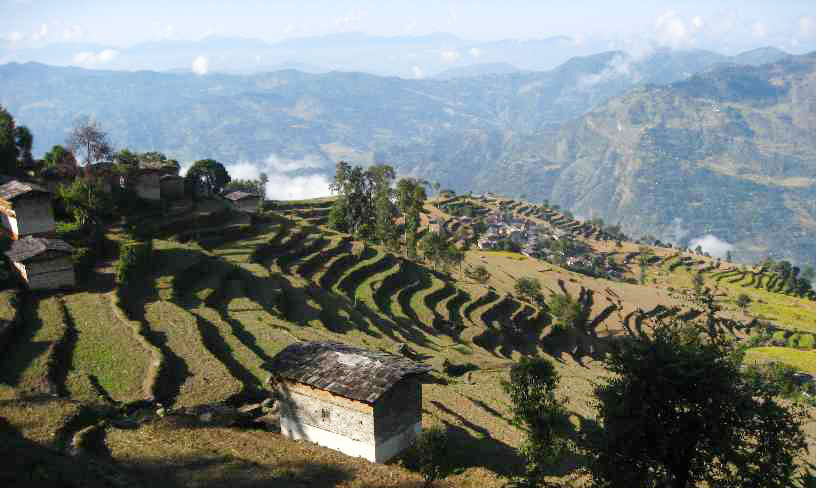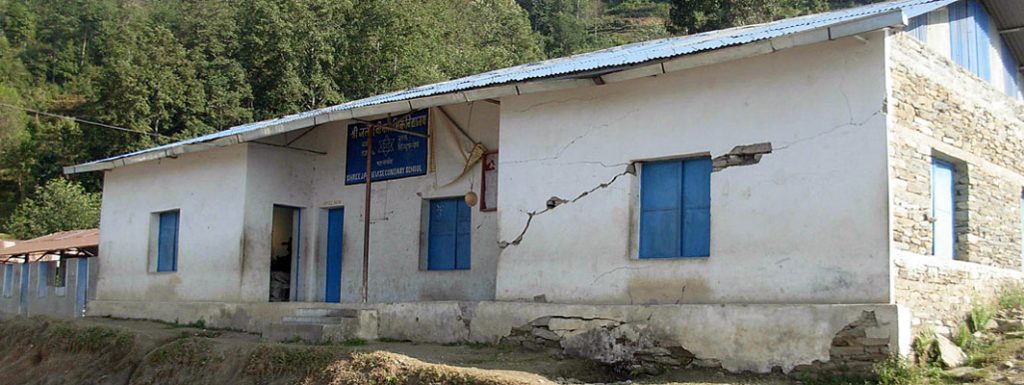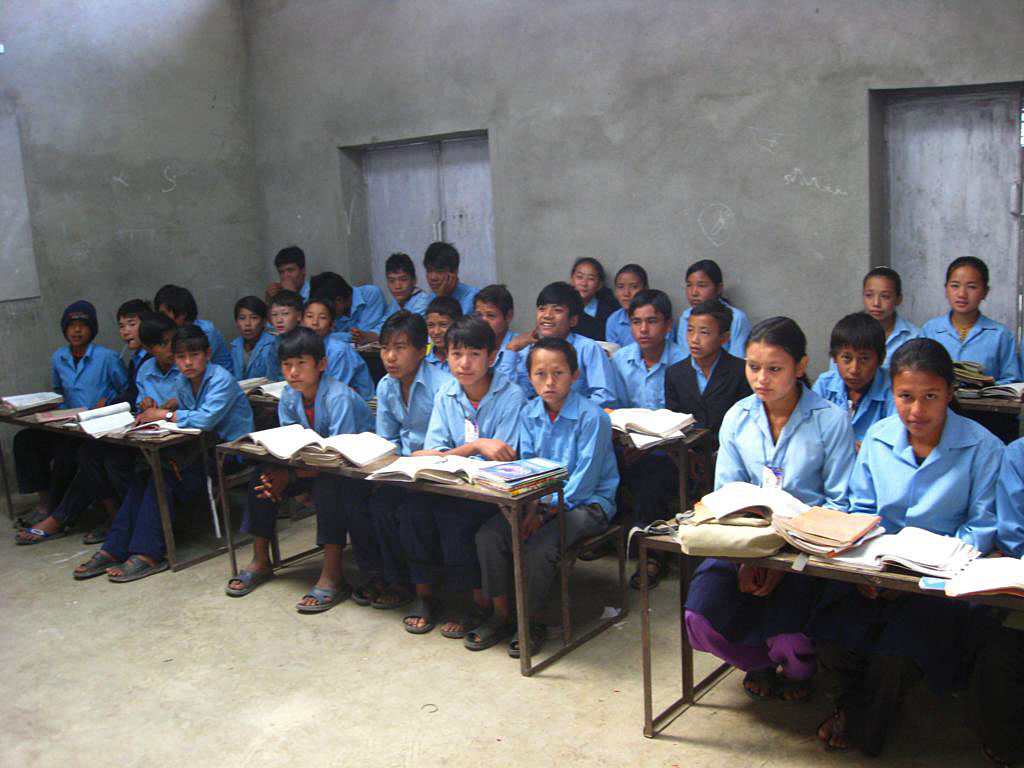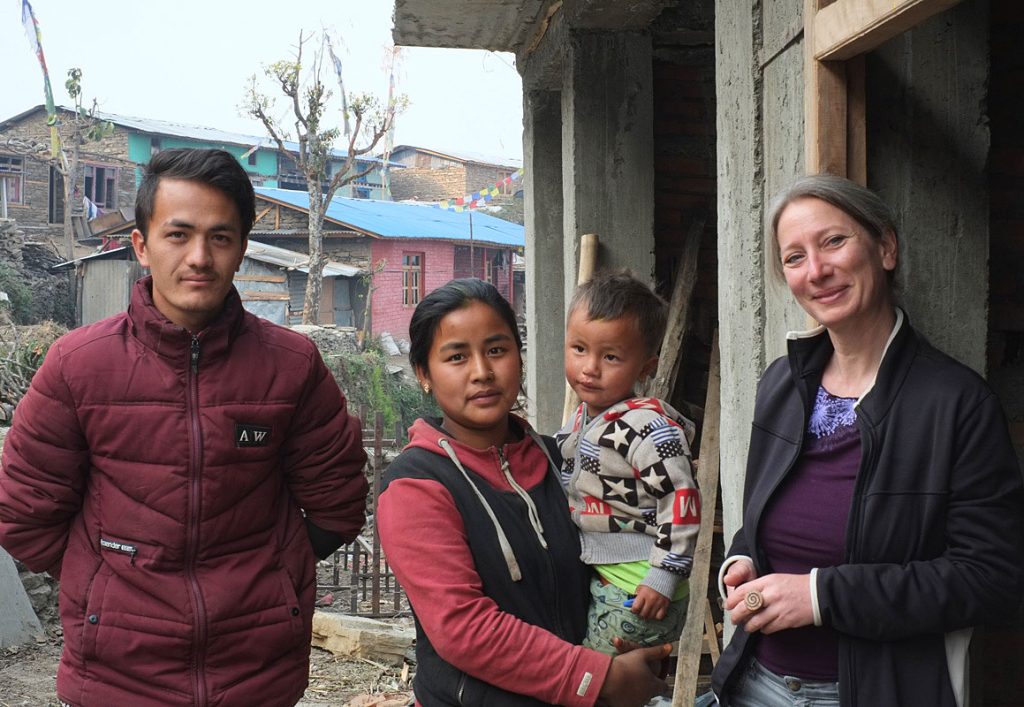PHASE Austria facilitated the construction of an earthquake-resistant secondary school in Yanglakot in Hagam VDC, Sindhupalchowk district.
Project communities:
Hagam, Sindhupalchok
Requirements
Up to now, education in Yanglakot, the largest village of the Hagam VDC, was only provided up to grade 8.
In Nepal, a school-leaving certificate can only be obtained after the 10th grade, which is a prerequisite for any further education. The nearest full secondary school is in the valley in Jalbire – a two to three hour walk up steep stone steps in each direction. Only those children who had relatives in Jalbire where they could stay during the week, or whose parents could pay for the boarding school, had the opportunity to graduate. So far, only one of the 10 teachers in Hagam is from the village.

The previous school was too small for the expansion to 10 classes, and furthermore, in an area where the earth regularly shakes, it was not earthquake-proof. Its structural condition was also rather unsatisfactory in other respects.
In consultation with the school district authorities and the local population, PHASE Austria decided to co-finance the construction of a new school building for the Shree Jal Devi Secondary School. After PHASE Austria’s funding commitment, the district school authority also pledged to co-finance two blocks.

Implementation
The prerequisite for the project was the cooperation and participation of the village population. The land for the new school – slightly above the village – was purchased by the community, and the stones were quarried locally by the people themselves. Much of the work, such as levelling and preparing the site, was also organised by the village. PHASE Nepal was responsible for the planning and construction supervision.
Construction of the first of four building blocks began in May 2007.
In May 2009, three of the planned four blocks were already in place, the first students of the Shree Jal Devi School were able to take their “School Leaving Exam”, and the students of the higher classes are already using the new premises. From the school year 2010/11 onwards – school years in Nepal start in May – all classes of the school will be conducted in the new buildings. Of course, the school’s facilities also include toilets and a water supply.

Result
Through the efforts of PHASE Austria, the school has been run as a full secondary school since 2007/08, and the students from Hagam were able to attend grade 9 and 10 in their home village. 13 pupils (5 girls) took their “School Leaving Exams” in April (on average in Nepal, about 50% of candidates pass). 7 of them passed at the first attempt, 3 others passed at the second attempt.
Overall secondary school student numbers have increased since PHASE was implemented. The second cohort to graduate from Hagam consisted of 16 students – all of whom sat their School Leaving Exams in March/April 2010.
The school building was damaged in the earthquake of 25 April 2015, but was still usable for years. It was demolished when the entire school was rebuilt in early 2018.
During a project visit to Hagam in March 2018, Brita Pohl (PHASE Austria) met three graduates of the school: two of them work for PHASE Nepal (pictured left, Sajan Tamang, Social Mobiliser), and Shanti Tamang (centre, with son) works as a teacher in a school that was founded as a PHASE catch-up class (with funding from PHASE Worldwide) and has since been handed over to the government. It is very unlikely that they would have been able to graduate from school without PHASE’s involvement.


